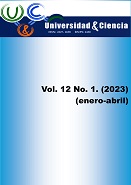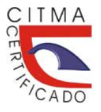Diagnosis and enhancement proposals for agricultural sustainability in a cuban enterprise
Keywords:
Agroecosystem, Food sovereignty, Sustainable productionAbstract
Climate change, natural disasters and the Covid-19 cause negative impacts on food sovereignty and the sustainability of agricultural production. La Cuba Agricultural Enterprise agroecosystems are under a great production pressure. Therefore there is a need for a yield increase and to protect the environment at the same time. The aim of the project was to contribute to the development of sustainable agricultural production in La Cuba Agricultural Enterprise. It took place between 2016 and 2018. The cropping systems research methodology was used. As diagnostic tools transect walk, semi-estructural interview and a series of measuring were applied. The main problems found were i) edaphic: low soil fertility and soil compactness; ii) climatic: erratic rainfall; biotic: low crop biodiversity and low tree presence; iv) management: inharmonic soil management taking into account its fertility, humidity and the cropping systems that are establish. Solution alternatives to the main problems found were proposed. They include the adoption of elemental measures or soil conservation, crop rotation with plants of specific characteristics, the 4R approach to fertilizer management, the organic matter incorporation to the soil, the adequate irrigation management, the growing of a great variety of crop species, the employment of well adapted and high yielding crop varieties with an enhanced nutritional quality and resistant to biotic and abiotic stress and the adoption of integrated pest management.
Downloads
References
BARRIOS, Edmundo...[et al.] (2018). Contribution of trees to the conservation of biodiversity and ecosystem services in agricultural landscapes. International Journal of Biodiversity Science, Ecosystem Services & Management. Vol. 14, No. 1, p. 1-16.
BLANCO, Carlos (2018). Entrevista a Carlos Blanco Sánchez, director de la Empresa Agropecuaria “La Cuba”, Ciego de Ávila, 27 de marzo de 2018.
CATIE (1986). El diseño de alternativas tecnológicas en la investigación de sistemas de fincas. Centro Agronómico Tropical de Investigación y Enseñanza, Informe técnico 91. Turrialba, Costa Rica.
DURÁN, R. ...[et al.] (2013). Análisis económico y valuación de efectos ambientales de los sistemas de labranza. Ciencia y experiencia para una siembra directa sustentable en los ambientes frágiles del S y SO Bonaerense. Argentina, Ed. J. A. Galantini.
ETCHEVERS BARRA, Jorge ... [et al.] (2014). ¿Por qué hay confusión en la interpretación de los análisis químicos de suelos en México?, Informaciones Agronómicas de Hispanoamérica, versión Cono sur. No. 14, p. 9-13.
FAO (2000). Guidelines for participatory diagnosis of constraints and opportunities for soil and plant nutrient management. AGL/MISC/30/2000. FAO Land and Water Division, Rome.
FAO (2011). Ahorrar para crecer. Food and Agriculture Organization, Rome.
FAO (2015). FAO and the 17 sustainable development goals. FAO, Rome.
GANGOPADHYAY, K. K., AGRAWAL, A. y GOWTHAMI, R. (2021). Innovations on Agrobiodiversity for Sustainable Agriculture in India. En Innovations in Agriculture for a Self-Reliant India. CRC Press. p. 69-82.
GOSWAMI, M. y DEKA, S. (2020). Plant growth-promoting rhizobacteria—alleviators of abiotic stresses in soil: A review. Pedosphere. Vol. 30, No. 1, pp. 40-61. Disponible en: https://doi.org/10.1016/S1002-0160(19)60839-8. Visitado: 20 de abril de 2022.
HAVLIN, John L. (2020). Soil: Fertility and nutrient management. En: Landscape and land capacity. CRC Press. p. 251-265.
HERNÁNDEZ, Alberto ...[et al.] (2019). La clasificación de suelos de Cuba: énfasis en la versión de 2015. Cultivos Tropicales. Vol. 40, No. 1, a15-e15.
IS-FAO (2015). Manual de agricultura de conservación. Instituto de Suelos-FAO, Roma, 55 pp.
ITELIMA, J. U. ...[et al.] (2018). Bio-fertilizers as key player in enhancing soil fertility and crop productivity: A Review. Direct Research Journal of Agriculture and Food Science. Vol. 6, No. 3, pp. 73-83. Disponible en: https://doi.org/10.26765/DRJAFS.2018.4815. Visitado: 10 de mayo de 2022.
KAIMOWITZ, Daniel (2020). Pobreza rural y medio ambiente en América Latina y el Caribe. Serie 2030 - Alimentación, agricultura y desarrollo rural en América Latina y el Caribe, No 35. Santiago de Chile. FAO. Disponible en: https://doi.org/10.4060/ca8607es. Visitado: 10 de mayo de 2022.
KASSAM, A. ...[et al.] (2013). Sustainable Soil Management Is More than What and How Crops Are Grown. In: Principles of Sustainable Soil Management in Agroecosystems, Chapter 14. R. Lal and B. A. Stewart, eds. CRC Press, Boca Raton.
LAL, Rattan (2020). Soil organic matter content and crop yield. Journal of Soil and Water Conservation. Vol. 75, No. 2, 27A-32A. Disponible en: https://doi.org/10.2489/jswc.75.2.27A. Visitado: 10 de mayo de 2022.
MARTÍNEZ, Miguel, OSUNA, Esteban, y ESPINOSA, Martín (2019). Impacto acumulado de la agricultura de conservación en propiedades del suelo y rendimiento de maíz. Revista Mexicana de Ciencias Agrícolas. Vol. 10, No. 4, pp. 765-778.
MORENO, R. (1985). Diseño de opciones tecnológicas para mejorar sistemas de producción de pequeños agricultores. En: Conceptos metodológicos sobre investigación y desarrollo de tecnología para sistemas de producción de cultivos. CATIE, Turrialba, Costa Rica. Vol. I, p. 17-33.
MULUMBA, J. W. ... [et al.] (2012). A risk-minimizing argument for traditional crop varietal diversity use to reduce pest and disease damage in agricultural ecosystems of Uganda. Agriculture ecosystems and environment. No. 157, pp. 70–86. Disponibe en: https://doi.org/10.1016/j.agee.2012.02.012. Visitado:10 de mayo de 2022.
OLIVER, T.H. ...[et al.] (2018). Overcoming undesirable resilience in the global food system. Glob. Sustain. No. 1 (e9), p. 1–9.
RODRÍGUEZ, Ricardo, HERRERA, Jorge, y HERRERA, José (2016). Fertilización fosfórica y potásica de la yuca (Manihot sculenta, Crantz) en rotación de cultivos. Universidad & ciencia. Vol. 5, No. 2. pp. 1-12.
SOLTANI, A. ... [et al.] (2020). Modeling plant production at country level as affected by availability and productivity of land and water. Agric. Syst. No. 183, Disponible en: https://doi.org/10.1016/j.agsy.2020.102859. Visitado: 10 de mayo de 2022.
TAMBURINO, Lucia ...[et al.] (2020). From population to production: 50 years of scientific literature on how to feed the world. Global food security. 24, approx. 8 p. Disponible en: https://doi.org/10.1016/j.gfs.2019.100346. Visitado: 10 de mayo de 2022.
YANG, G. ...[et al.] (2018). How Soil Biota Drive Ecosystem Stability. Trends in plant science. Vol. 23, No. 12, approx. 11 p. Disponible en: https://doi.org/10.1016/j.tplants.2018.09.007. Visitado: 25 de septiembre de 2022.
Downloads
Published
Versions
- 2023-05-24 (2)
- 2023-01-25 (1)
How to Cite
Issue
Section
License
Copyright (c) 2023 Universidad & ciencia

This work is licensed under a Creative Commons Attribution-NonCommercial-ShareAlike 4.0 International License.





















